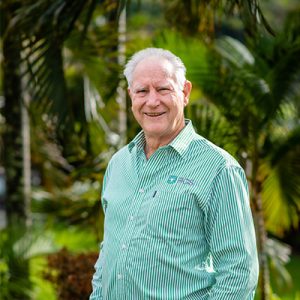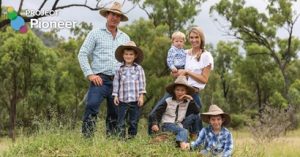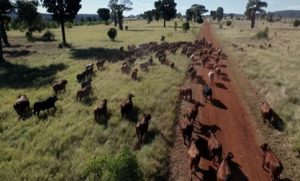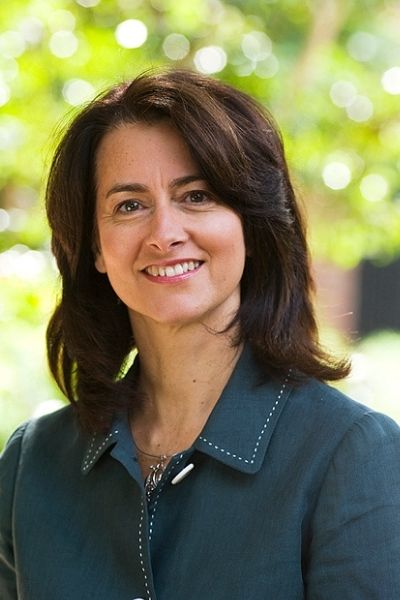
Dennis Donohoe, farm manager with Aminya Pastoral, is a seasoned producer with decades of experience, and his story is a testament to how even minor changes in farming practices can lead to significant improvements in productivity and land health.
At the end of 2021, Australia committed to reaching net zero emissions by 2050, in line with what was pushed during COP26—the 2021 United Nations Climate Change Conference held in Glasgow. Long before these government promises were made, thousands of Australian farmers were already benefiting from regenerative practices.
Those at the forefront of sustainable farming in Australia are reaping the benefits of sequestering soil carbon at scale, improving productivity, profitability and environmental health. According to our Founding Director, Dr Terry McCosker OAM, there is a huge opportunity for farmers to play a significant role in addressing our country’s climate and biodiversity crisis.

Across Australia, investors and shareholders are looking to demonstrate they are offsetting climate risk and meeting their ESG (environmental, social and governance) goals. No longer just a tick-box exercise, businesses are looking to invest in real change and pivot their practices.
“In the last 12 months, I have regularly received calls from financial institutions, high net worth individuals, funds, and emitters, all asking how they can get involved in regenerative agriculture. Food corporations, responding to consumer demand, also want to source regenerative produce,” says Dr McCosker.
There is no denying the Australian agriculture market is shifting, and those who embrace the change are sure to benefit the most.

While reducing emissions is essential, agriculture can also draw down carbon from the atmosphere and store it in soils and vegetation, becoming an asset to producers and the environment. This transitions properties from a source of emissions to a carbon sink. They move from being part of the problem to part of the solution via regenerative farming.
“Regenerative approaches store carbon, improve soil health, increase biodiversity, increase water holding capacity and improve drought resilience. They also provide access to new income streams from biodiversity credits and other co-benefits. So it’s a win, win, win,” says Dr McCosker.
In 2016, RCS became a key partner in Project Pioneer, a project aimed at demonstrating how the switch to regenerative grazing can benefit family businesses, the environment and regional communities.
Through this project, RCS spent five years training and empowering more than 150 grazing families to transition to regenerative systems over 1.3 million hectares in catchments of the Great Barrier Reef.
These farms reduced sediment runoff to the reef, maintained ground cover above 70% and improved carrying capacity and productivity by 14%. All during one of Queensland’s toughest droughts.

Our Founding Director also chairs Carbon Link, a carbon developer with over 100,000 hectares in soil carbon projects on 30 properties in QLD and NSW—numbers that are continually growing.
According to Terry, the measurements so far are showing very promising results, despite severe drought.
“This is very exciting because it is the largest longitudinal study of soil carbon at scale anywhere in the world. Once we can share the results, it will have significant implications for the soil carbon industry in Australia and globally.”
All Carbon Link projects are registered under the Australian Government’s Emissions Reduction Fund.
Author:

Profitable Paddocks is our educational newsletter sent to your email inbox every quarter.
Click the Bell for the latest blogs.

Dennis Donohoe, farm manager with Aminya Pastoral, is a seasoned producer with decades of experience, and his story is a testament to how even minor changes in farming practices can lead to significant improvements in productivity and land health.
Once you have ownership as to why planning is important, the next ingredient is to work out where and how you will do your planning. When you write something down you change your relationship with the content. I cannot emphasise enough the power of getting your thoughts and plans out of your head onto paper or the computer.
The season in SA and Tassie is particularly tight right now with little or no useful rain since early January and a generally failed 2023 spring prior to that. Right now, across southern Australia and much of the eastern NSW, you won’t need to drive far out into the countryside to see cattle and sheep grazing (and lying on) hay and silage trails lined across paddocks.
Martha Lindstad and partner Robert James are farm managers on ‘Karalee’, Enngonia NSW. Both have travelled different paths to being where they are. Martha is originally from Norway, growing up on a three hectare farm before travelling to New Zealand and eventually the Pilbara in Western Australia. It was here that she saw the benefits of sustainable farming for the country and livestock.
The Prince’s RCS mentor, Raymond Stacey, sees a strong future ahead for Simon and Laura. “The Drought Resilient Soils and Landscapes project is about supporting graziers to manage their country and businesses better,” Raymond said. “I see an operation here where they’re working hard on their planning and putting their plans into action to leave their country, business and people in better shape.”

Join our mailing list
